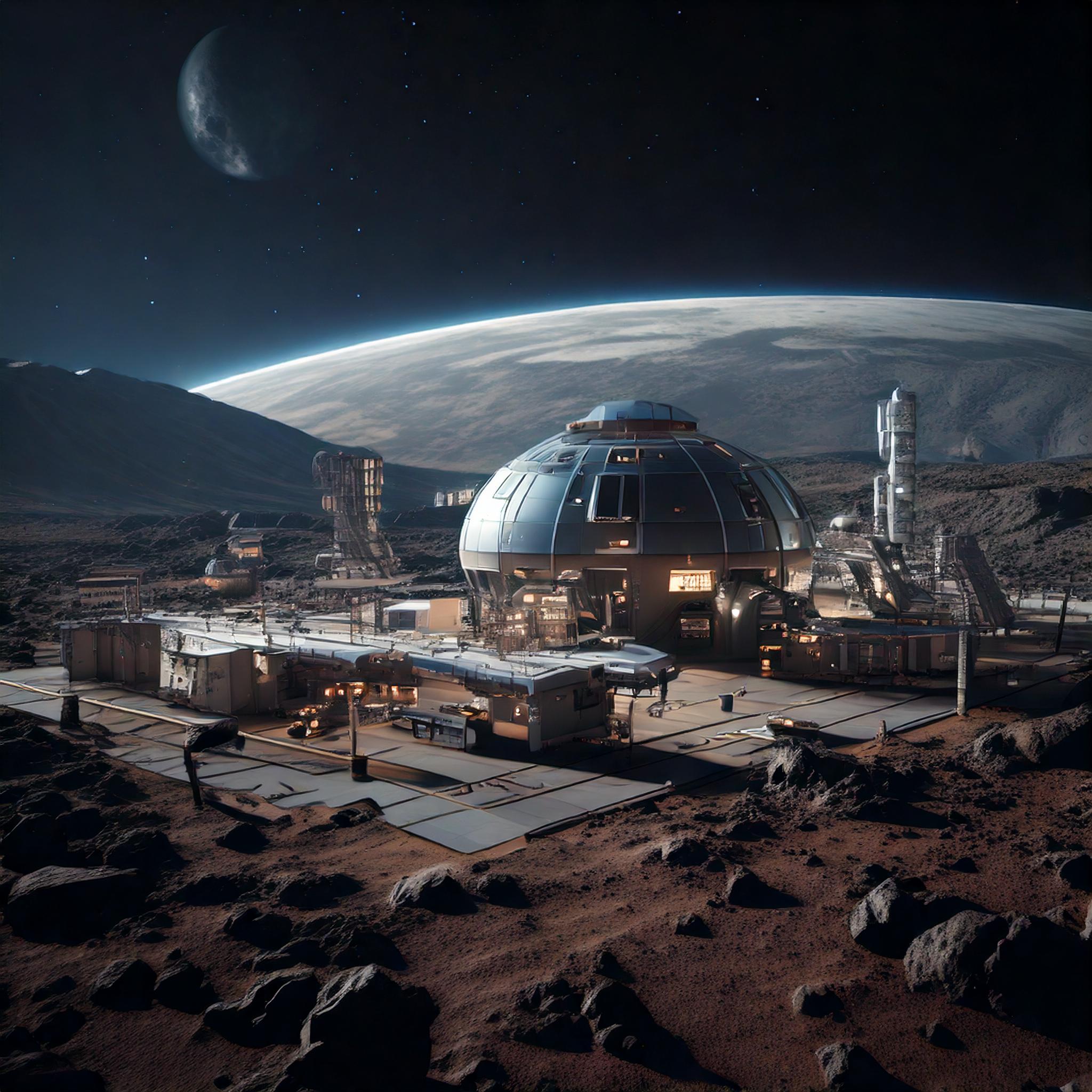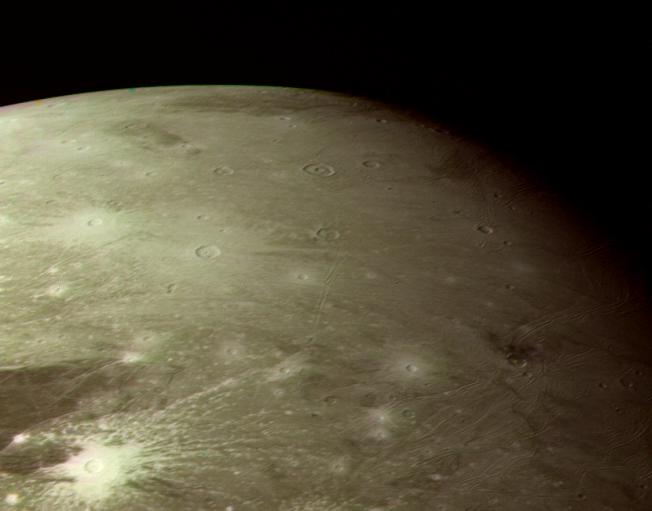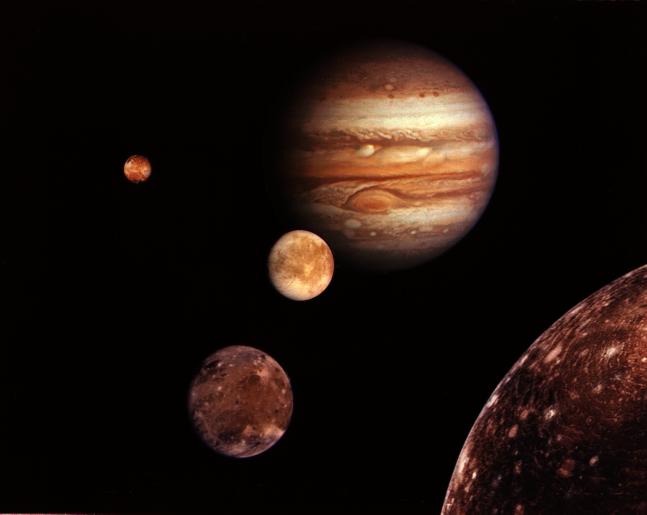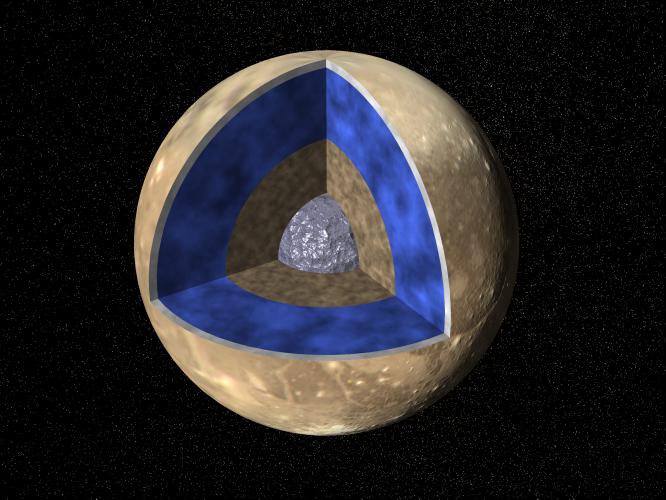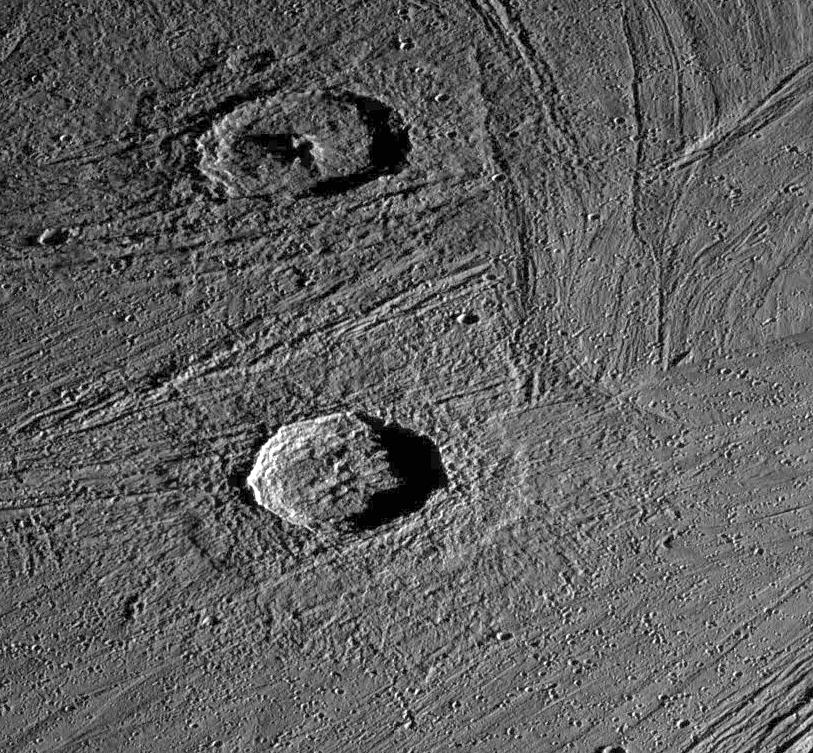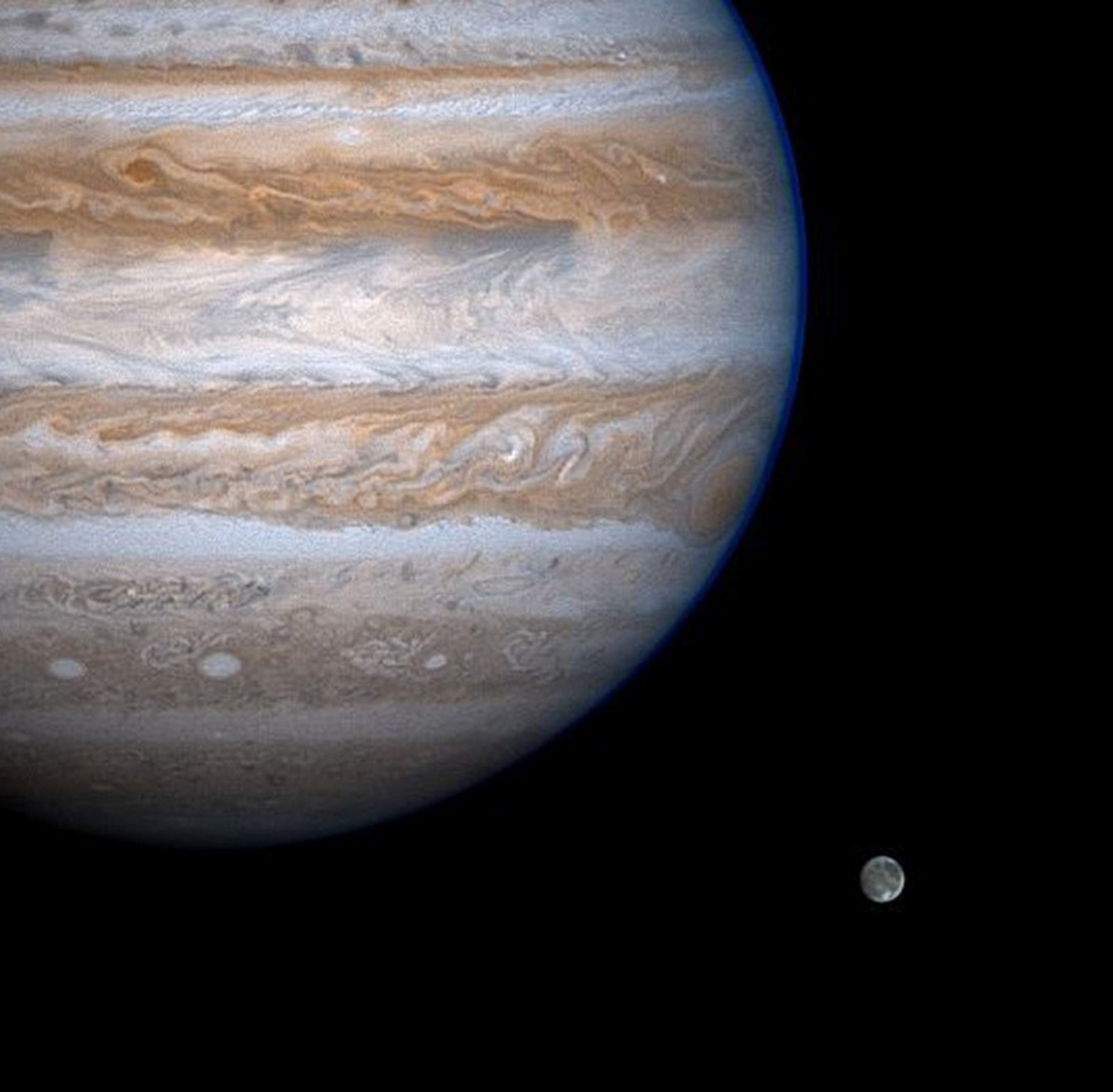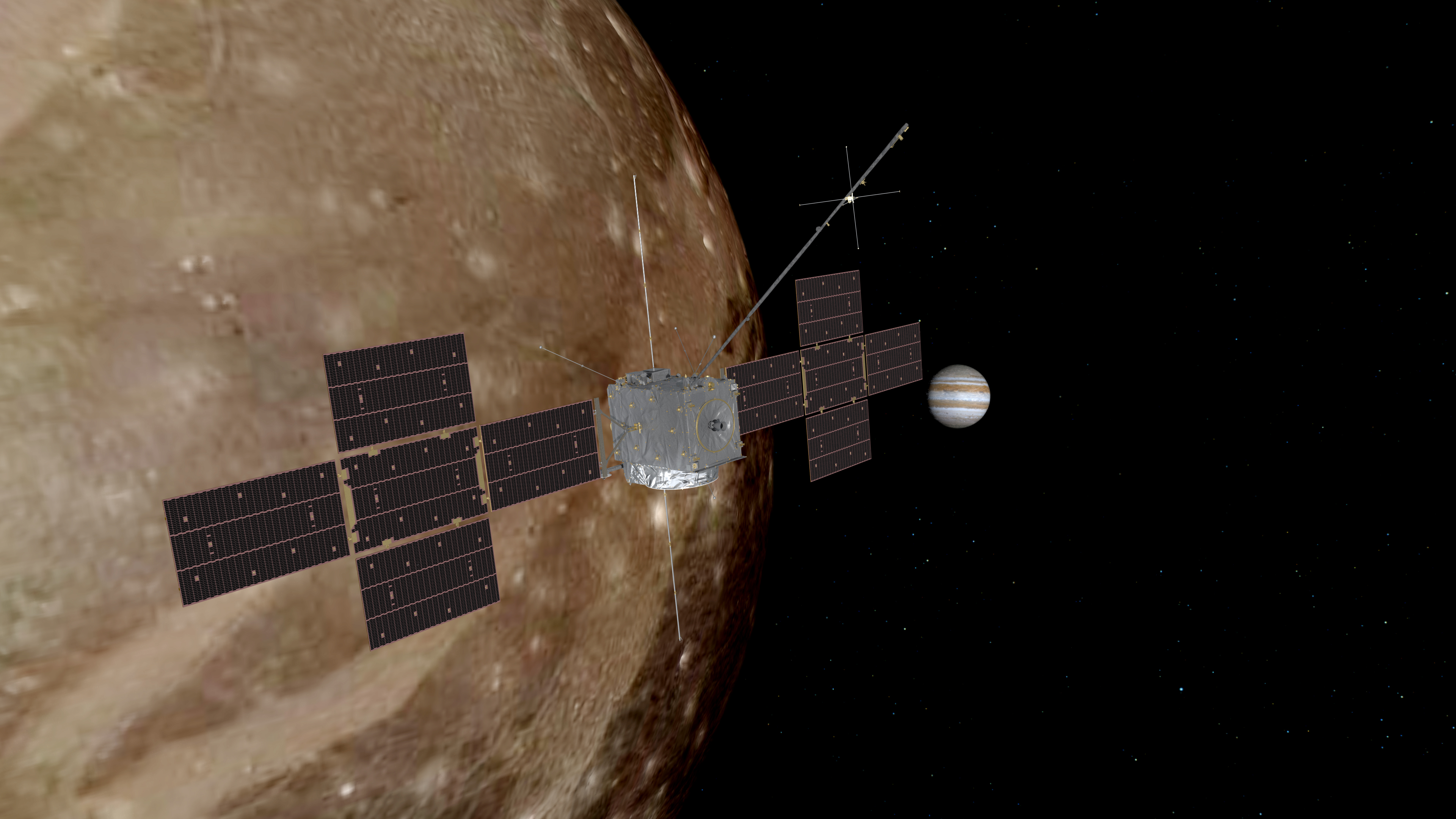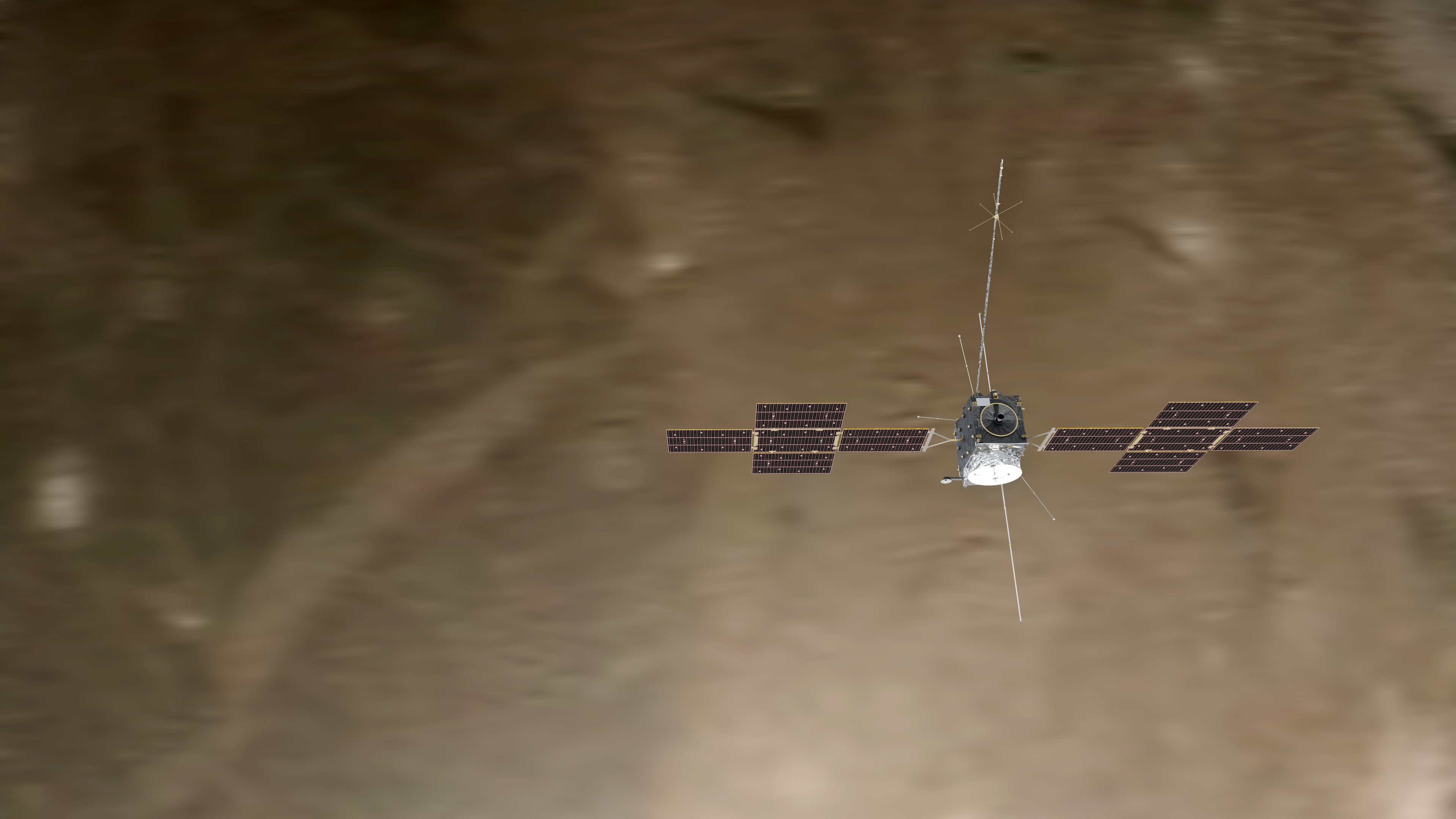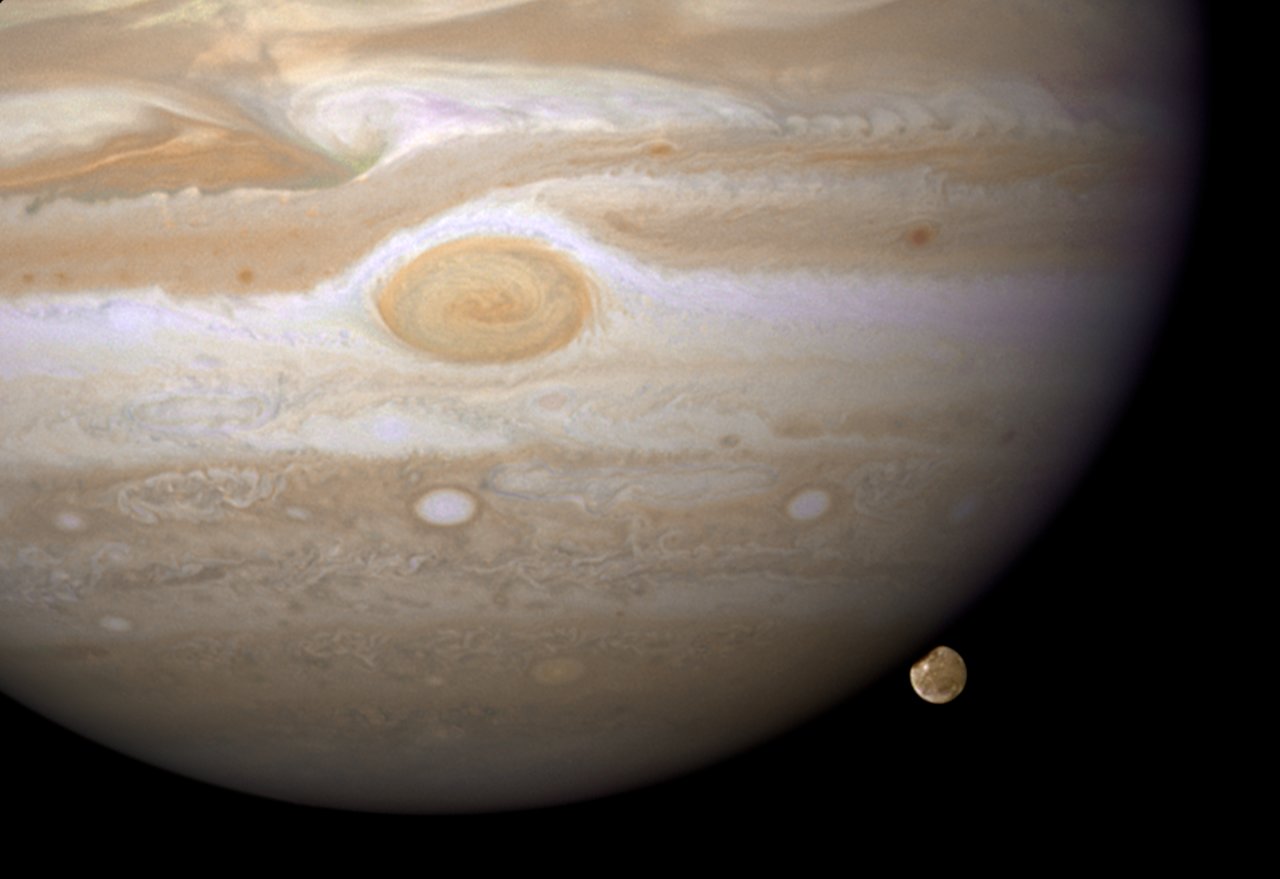Ganymede
Overview
| Location: | Ganymede orbits Jupiter at an average distance of 1,070,400 km (665,000 miles) |
|---|---|
| Size: | 5,268 kilometers (3,273 miles) |
| Surface Temperature: | -112°C (-170°F) in sunlight to -193°C (-315°F) in shadow |
| Athmospheric Composition: | mostly Oxygen (O2) |
| Athmospheric Pressure: | 0.2–1.2 μPa (1.97×10−12–1.18×10−11 atm) |
| Orbital Duration: | 7.15 Earth days to complete one orbit around Jupiter |
| Named After: | Ganymede (Cupbearer to the gods) from Greek Mythology |
| Remarks: | Its reflectivity (albedo) is about 0.43, indicating a mix of ice and dark rocky material and Ganymede’s surface gravity is about 1.428 m/s², or roughly 14.6% of Earth’s gravity. |
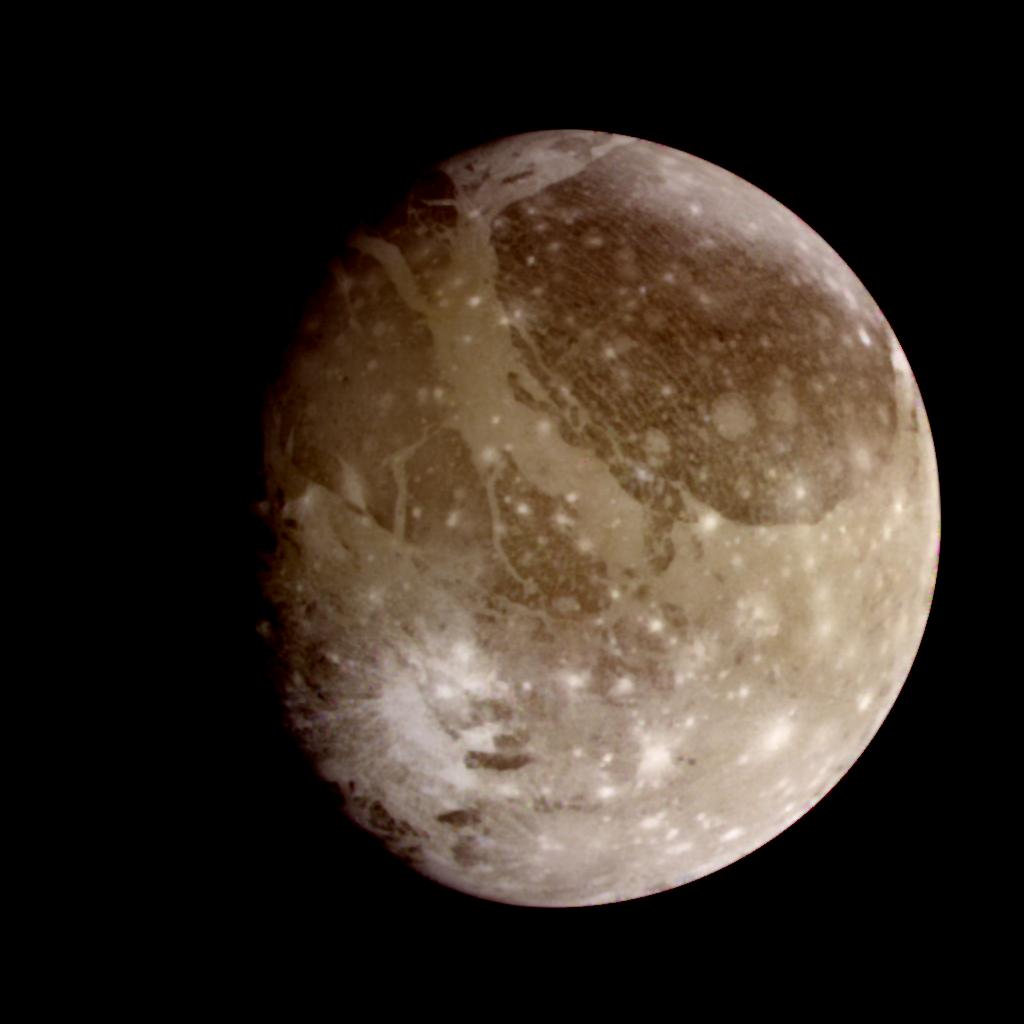
Overview
Ganymede, the largest moon of Jupiter and the entire Solar System, is a celestial marvel. With a diameter of 5,268 kilometers (3,273 miles), it surpasses even the planet Mercury in size, though it is significantly less dense. Its composition, a mix of rock and water ice, gives it a unique structure that intrigues scientists and inspires exploration.
Discovered in 1610 by Galileo Galilei, Ganymede orbits Jupiter at an average distance of 1,070,400 kilometers (665,000 miles). It completes its orbit in 7.15 Earth days, maintaining a tidally locked relationship with Jupiter, meaning the same side always faces the planet. Its surface reveals a stark dichotomy of terrains: darker, heavily cratered regions and brighter areas adorned with ridges and valleys. This diversity hints at a complex geological history.
One of Ganymede’s most fascinating features is its internal composition. Beneath its icy crust lies a vast subsurface ocean, potentially 100 kilometers (62 miles) deep, which holds more water than all of Earth's oceans combined. This ocean, sandwiched between layers of ice, raises the possibility of harboring conditions suitable for life. Additionally, Ganymede is the only moon in the Solar System known to possess an intrinsic magnetic field, likely generated by a molten iron or iron-nickel core.
The moon also has a tenuous atmosphere, primarily composed of oxygen. However, this oxygen is not breathable and exists in trace amounts, with a surface pressure too low to support life as we know it. Temperatures on Ganymede are extreme, ranging from -112°C (-170°F) in sunlight to -193°C (-315°F) in shadow.
Spacecraft have been crucial in uncovering these details. Voyager missions in 1979 provided the first close-up images, while the Galileo spacecraft (1995–2003) mapped its surface and identified its magnetic field. The Juno spacecraft continues to study Ganymede from afar, and future missions, such as the European Space Agency’s JUICE (Jupiter Icy Moons Explorer), aim to deepen our understanding of this intriguing moon.
Ganymede’s sheer size, unique magnetic field, and the possibility of a subsurface ocean make it a key focus of planetary science. As the search for extraterrestrial life and understanding of the Solar System progress, Ganymede stands as a beacon of scientific curiosity and potential discovery.
Imagining a Colony on Ganymede
A colony on Ganymede would need to address the moon's extreme environment: low temperatures, intense radiation from Jupiter, and a thin, oxygen-poor atmosphere. Despite these challenges, Ganymede's subsurface ocean and potential resources make it an intriguing candidate for human habitation. Here’s how a potential colony might look and function:
Environmental Challenges
Ganymede presents a hostile environment for human habitation:
- Radiation: Ganymede is exposed to intense radiation from Jupiter’s magnetosphere, requiring strong shielding for habitats and equipment.
- Extreme Cold: Surface temperatures can drop as low as -193°C (-315°F), necessitating advanced heating and insulation systems for survival.
- Thin Atmosphere: Ganymede has a very thin atmosphere composed mainly of oxygen, but it is not breathable, meaning the colony would need a pressurized environment.
- Low Gravity: Ganymede’s gravity (about 14.6% of Earth’s) could cause long-term health issues, including muscle atrophy and bone density loss.
- Surface Instability: Frequent geological activity, such as ice shifting or cracks, could disrupt infrastructure.
- Distance from Earth: Communication with Earth would have significant delays (about 30-45 minutes round trip), complicating remote operations and decision-making.
Possible Colony Design
- Underground or Shielded Habitats: To protect against radiation, habitats would likely be built underground or beneath thick ice layers, with radiation-shielding walls.
- Pressurized Modules: Living and work spaces would be pressurized, with Earth-like conditions for air, temperature, and gravity, using advanced life support systems.
- Energy Systems: A combination of nuclear fission reactors for reliable power and enhanced solar panels to supplement energy needs during sun exposure.
- Subsurface Water Extraction: Systems for accessing water from Ganymede’s subsurface ocean or surface ice, used for drinking, oxygen production, and energy generation.
- Greenhouses: Hydroponic or aeroponic farms for growing food in controlled environments, supporting both nutrition and oxygen production.
- Transportation Infrastructure: Rovers and transport systems, both surface and underground, for exploration and resource gathering, all designed with insulation and radiation protection.
- Autonomous Repair Systems: Robots or drones for regular maintenance and repairs in the harsh environment, ensuring infrastructure longevity.
Functionality and Purpose
A colony on Ganymede would serve as both a scientific outpost and a testing ground for future human space exploration and settlement.
Commercial and Industrial Exploitation
The commercial and industrial exploitation of Ganymede would be driven by its resources, scientific potential, and strategic location within the outer Solar System. While it presents significant challenges, it also offers unique opportunities for space industries, including mining, manufacturing, and energy production. Here's how this might unfold:
- Water Ice Mining. Ganymede’s surface is rich in water ice, which could be mined for essential resources like water, oxygen (via electrolysis), and hydrogen (for fuel). Water and fuel can also be exported off-world.
- Mining for Metals and Minerals. Ganymede’s rocky core is believed to contain valuable metals like iron, nickel, and silicates that could be mined for use in construction, manufacturing, and space industry.
- Zero Gravity Manufacturing: Ganymede's low gravity could be ideal for certain industrial processes. Also 3D Printing and Assembly: In-situ manufacturing of structures, and tools are feasible.
- Ganymede can also function as a destination for Space Tourism and a Trading Hub among Earth'S Colonies
